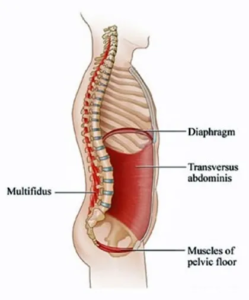Pelvic Floor 101
The pelvic floor refers to a group of muscles that close the bottom of the pelvis. The pelvic floor works alongside the abs, back and diaphragm to maintain normal core strength. It is also closely tied to the three systems that pass through it (urinary system, digestive system, and reproductive system). Because of its close connection to these systems, pelvic floor problems can lead to issues with urinary function, bowel function, and sexual function. Pelvic floor problems can also be related to groin, hip or low back pain since the pelvic floor shares connections with these areas. It sounds like a lot can be impacted but don’t worry! These problems are treatable and addressing them can improve quality of life.

So how do you know if you have pelvic floor problems or pelvic floor dysfunction? It can first help to understand who is most likely to encounter pelvic floor issues. At the top of the list are pregnant women, postpartum women, postmenopausal women, female athletes, cyclists, the elderly, stroke victims, and people who have had surgery in the pelvic area. Next, it can help to understand what normal pelvic floor function looks like. There should be no pain with any pelvic floor function (no pain during urination, bowel movements, or sexual activity). Urges to go to the bathroom should be manageable and well controlled. There shouldn’t be leakage of urine or stool for any reason. If you are part of an at-risk population or your pelvic floor function doesn’t seem normal, you might benefit from seeing a pelvic floor physical therapist!
Pelvic floor problems can often be difficult to deal with. There is no shame in having these problems and no reason you should go through it alone. As you reach out to get help, please don’t be embarrassed. Our team is looking forward to helping you!
